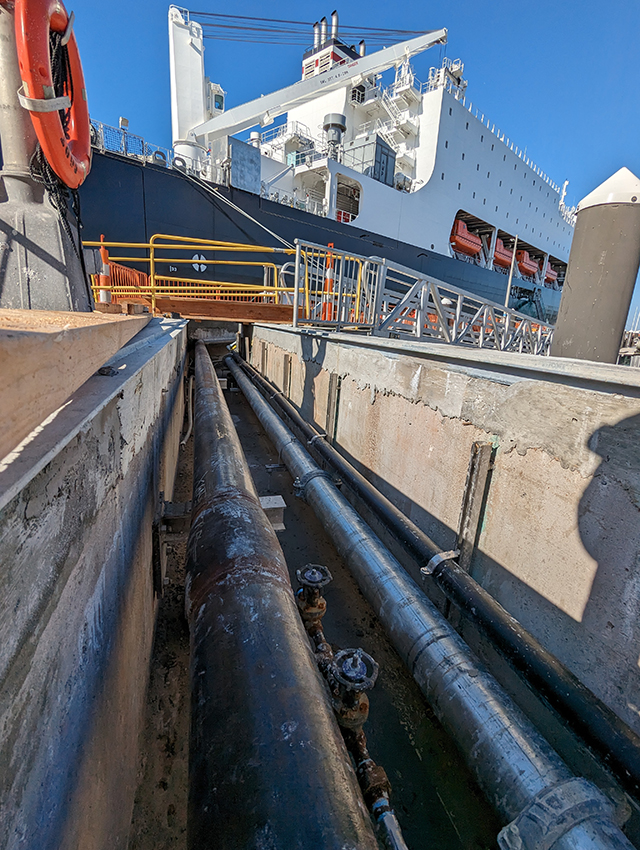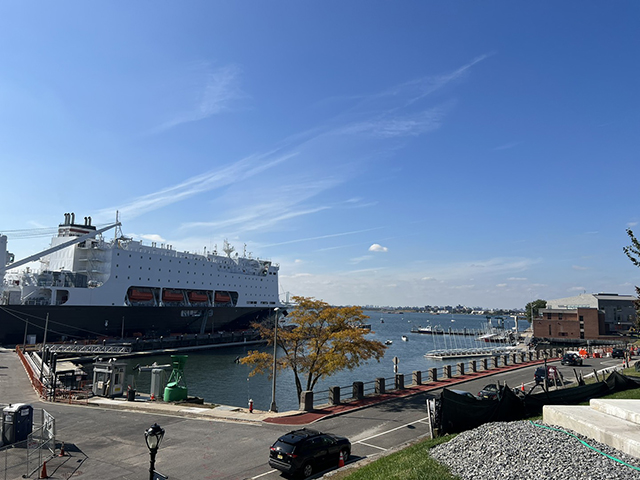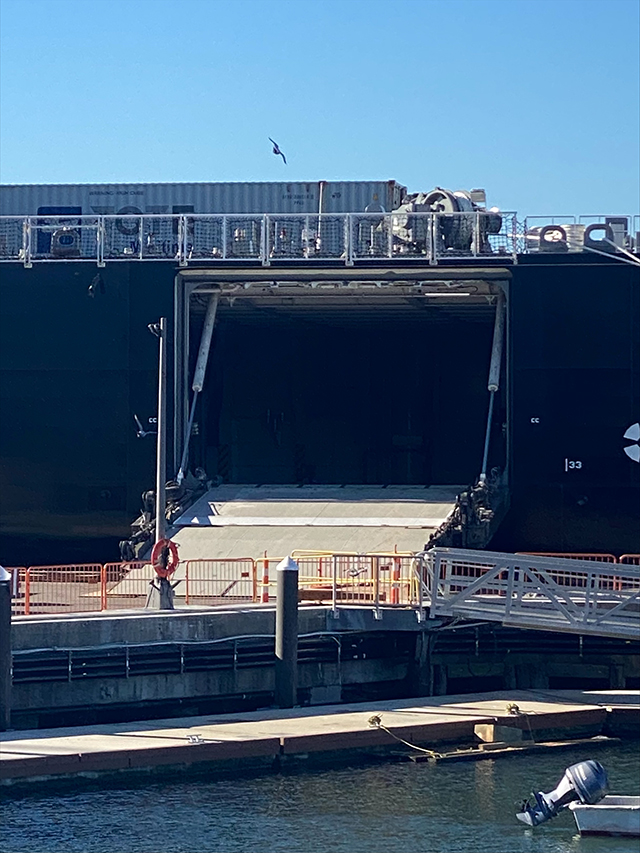One if by Land & Two if by Sea
Next-Gen Training Ships Doubling America’s Maritime Academies’ Infrastructure Needs
By Kevin Kikola, Michael Wilkins, and Andrew Hay
The United States' five State Maritime Academies are responsible for educating the next generation of officers in the merchant marine. Graduates are not only integral to national security and maritime defense readiness, but are well known for their resilience, discipline, and technical capabilities, making them extremely valuable candidates in the job market post-grad. Each of the five academies––California, Maine, Massachusetts, State University of New York (SUNY) and Texas A&M University at Galveston––are independently respected and lauded both for their academic rigor and hands-on pedagogical approach to preparing students to become world-class mariners, as well as building the leadership and interpersonal skills needed for professional success.
To better equip those five institutions to provide that critical educational foundation, the U.S. Maritime Administration (MARAD) has been gradually working to decommission and replace their current fleet of training ships––which were originally designed for the use of steam power and have begun to age beyond their viability. The new vessel program — known as National Security Multi-Mission Vessels (NSMVs) — will completely modernize the academies' training abilities, better reflecting current trends and operations in the shipping industry and strengthening the depth of real-world experience that will be expected of graduates.
The Challenge
RMF Engineering has been working with four of the five academies, bringing both a technical background in complex, higher education infrastructure projects and experience in utility distribution to bridge the gap with these maritime needs. Three of the five campuses will be discussed in this article, SUNY Maritime, Massachusetts Maritime, and Maine Maritime, and each campus has an existing training vessel the Empire State, the USTS Kennedy, and the State of Maine, respectively. As with any new campus addition, all three institutions have required significant infrastructure overhauls to support the NSMV's arrival –– a delicate balancing act, given the need to equalize current conditions on land with increased demands offshore.
The NSMVs are different in size, construction, appearance, as well as utility needs from the ships they are replacing. They are designed to operate entirely from electric power, which accounts for many of the changes needed on campus. Compounding the traditional facilities management considerations for a new academic or student union building, each institution was looking at substantial pier improvements to support these changes––a requirement of the MOA with MARAD and a requirement for federal support for all the academies selected for the program––and the nuances of establishing a resilient utility system for a "building" at sea.

SUNY Maritime College: NSMV and Utility Trench Upgrades in Progress
Photo credit: RMF Engineering
SUNY
At SUNY Maritime––the first academy to receive upgrades for the new NSMV, the Empire State––RMF Engineering designed the academy's new shoreside infrastructure needed to accommodate the ship delivered last year (9/22/2023). A comprehensive load analysis was conducted on the new vessel’s shore power demand for a variety of MARAD stipulated conditions.
A powerful national asset, the NSMV was designed to provide world-class training for the U.S.’s future mariners and to support humanitarian assistance and disaster relief missions in times of need –– bringing on-board state-of-the-art hospital facilities, a helicopter landing pad, and the ability to berth up to 1,000 people. This capacity represents a sizable increase from the 791 that could be accommodated on the previous vessel. The NSMV also has a roll-on/roll-off ramp and container storage allowing it to provide aid to damaged ports –– translating to a shore power electrical demand between 2000kVA to 4000kVA, depending upon weather and operating conditions. For comparison, the NSMV's on-land equivalent in terms of that electrical load profile would be roughly a 70,500-150,000-square-foot, high-performance educational lab facility.
For SUNY, the incoming NSMV increased by six times the electrical demand of its former training vessel on a yearly basis, doubling the entire campus load. Weighing the existing infrastructure on campus, the local costs for energy, and the port's proximity to other landmarks, systems, and structures, RMF reviewed its analysis with the local utility and the ship’s crew for specific operational input to determine how best to meet the demand increase. Ultimately, RMF worked closely with the utility company to equip SUNY's campus with a second electrical service.
Carefully considering the site's context in relation to future campus resilience, RMF’s design provided new main switchgear to receive the new service feeders on an elevated platform to protect it from storm surge and potential utility feeder failures. Capitalizing on the existing campus steam generation and onboard steam-to-hot water heat exchanger, RMF also designed a replacement steam line between the existing plant and the pier––allowing facilities management to curtail the electrical demand of the training facility in winter by providing supplemental heating via hot water.
As more information became available from MARAD while the infrastructure upgrades took place, however, it was determined that the existing pier structure would not be capable of supporting the lateral loads of NSMV during heavy weather mooring. RMF partnered with McLaren Engineering Group to design an upgrade to the academy's pier structure and utilities to accommodate the new vessel and future campus growth. The pier upgrades included new mooring dolphins, new concrete piles, and new pier deck including utility distribution trenches.

SUNY Maritime College: NSMV at Campus
Photo credit: RMF Engineering
Massachusetts Maritime Academy
Massachusetts Maritime Academy's current vessel, the USTS Kennedy, entered service in 1967 and was converted into a training ship in 2003. RMF Engineering partnered with GEI Consultants to facilitate the campus' transition in preparation for the arrival of its replacement, the Patriot State II, which is anticipated by the end of 2024.
Leveraging its experience designing the upgrades at SUNY, RMF led a similar comprehensive load analysis and review, informing the institution's determination that the shore power connection would be designed to support the training facility during normal academic shore-side operations––rather than those at peak demand. This decision limited the increased load to the lowest threshold required to serve the Patriot State II. However, this limitation did not eliminate the need for an additional dedicated service feeder from the local utility to supply shore power to the ship. RMF worked with the utility company to run a new service entrance feeder throughout the campus before being transformed to the voltage required to serve the ship.
Like SUNY, Massachusetts Maritime also sought to offset the winter heating requirements of the Patriot State II with its existing steam generation, but RMF's assessment found that the current system in place would be unable to meet the peak demand of the ship’s heat exchanger. Evaluating the economics of the local electricity rates versus the steam operating costs, along with the cost of increasing shore-side steam generation capacity, RMF determined that increasing the shore-side steam generation capacity to the peak demand of the vessel would require additional plant footprint. It also would not be as cost-effective an investment, as peak conditions rarely occur.
A plant replacement was designed to increase the system capacity as much as possible, while maximizing the existing building footprint. This allows the shore-side steam generating capacity to provide more than double the average demand from the ship’s heating system, despite being only roughly 50% of the peak demand.

SUNY Maritime College: NSMV RoRo Ramp at SUNY
Photo credit: SUNY Maritime College
Maine
The third NSMV will be delivered to Maine, whose academy shares a port with its historic coastal town––requiring careful coordination and planning to support the variety of vessels that berth there. An expanded concrete pier, built on steel pilings, will replace the existing timber-construction, with new utility connections designed specifically to support the NSMV running beneath, including new underground steam lines, sewer lines and water lines. Like SUNY and Massachusetts Maritime, a new utility service was required to support the load of the NSMV, and new infrastructure was distributed to the pier. RMF has been working closely with the local utility company to upgrade its distribution line, following which, a new electrical service will be provided, transformed, and distributed throughout the campus to serve the new training facility.
RMF also worked with a design team led by GZA to provide upgraded infrastructure and waterfront improvements. The existing steam plant at Maine Maritime had no room for growth, and currently runs exclusively on No. 2 oil, increasing the operating cost of the plant when compared to natural gas. Instead of increasing the plant’s capacity, other buildings currently served by the plant are being fitted with local boilers to increase available steam capacity to the vessel.
Conclusion
Despite the consistency across each NSMV, all three campuses required highly tailored approaches to solve the unique challenges and design criteria. RMF's comprehensive and nuanced strategies for SUNY, Massachusetts Maritime, and Maine Maritime not only prepare the local grid for the increased electrical demands, but also equip the campuses with adequate utilities to receive the new ships and best support the continued academic programs and the communities surrounding each campus. As a result, our US Maritime Academies will bring their vessel training and classroom programs into a new era of teaching and learning.
Kevin Kikola, PE, Project Manager; RMF Engineering, is an experienced electrical engineer / project manager specializing in providing construction plans, specifications, and cost estimates for supporting electrical systems in chiller, boiler, and co-gen plant designs. Michael Wilkins, PE, Project Manager; RMF Engineering, is a highly skilled mechanical engineer / Project Manager with an expertise in designing and constructing infrastructure systems for commercial facilities with a focus on campus utilities. Andrew Hay, PE, CxA, Division Manager, Infrastructure Engineering, RMF Engineering, directs the Infrastructure Engineering resources for RMF and has over 12 years of experience in the design of low- and medium-voltage switchgear and substation design drawings, specifications, and cost estimates.